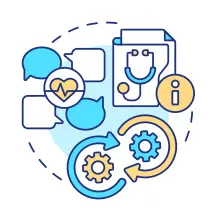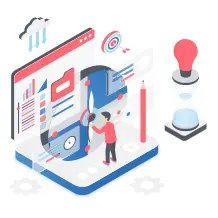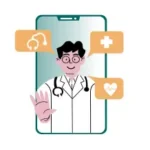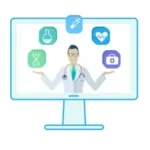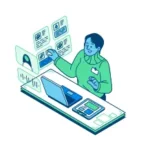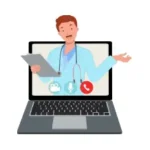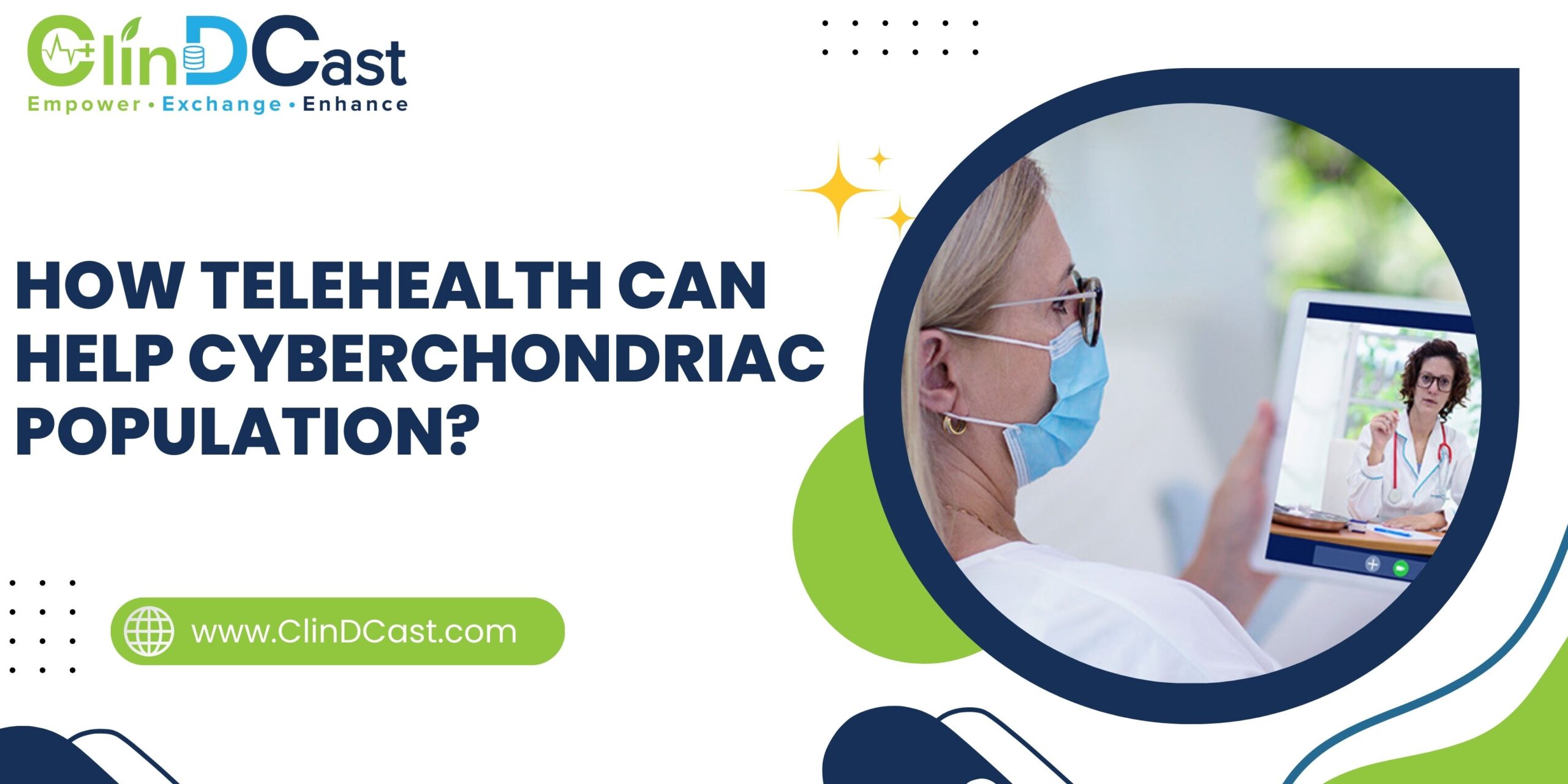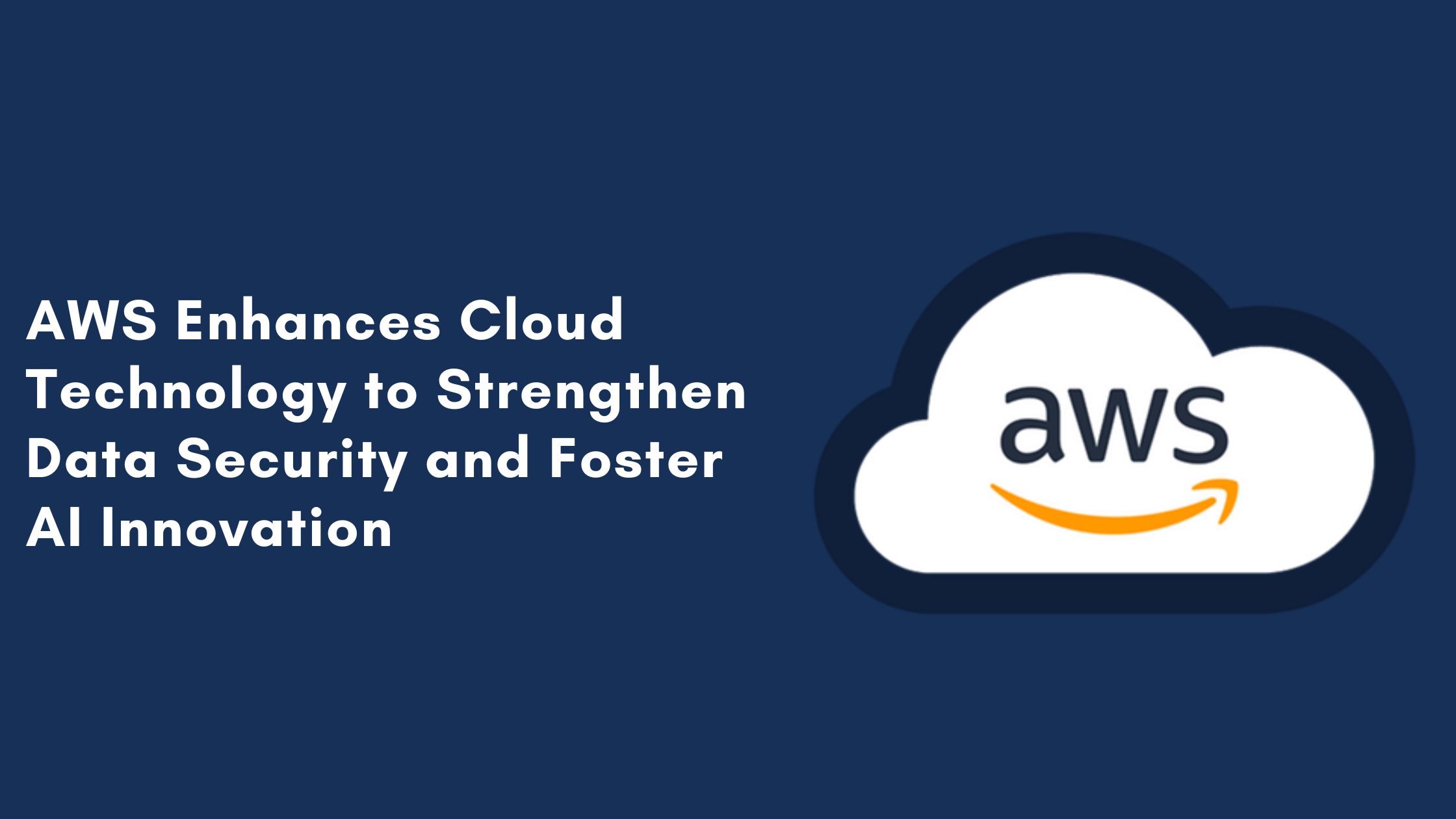
The words “telemedicine,” “telehealth,” “virtual care,” and “m-health” are interchangeable when referring to remote medical services. Instead of doing in-person appointments, doctors now deliver their medical services via phone conversations and video conferencing. This idea is neither novel nor undiscovered. Since there has been phone service, telemedicine platforms have been used, and doctors have provided phone consultations. As technology advanced, it eventually transformed into video conferencing, providing medical professionals with increased access to data for more accurate diagnosis and guidance.
Virtual care, however, took a completely new turn with the introduction of mobile phones and the abundance of alternatives, such as the ability to check vital signs like blood pressure and pulse through wearables. This made virtual care at least as accurate and efficient as traditional consultations, if not more so. Although telehealth was an option available to everyone, the COVID pandemic forced individuals to choose it and realize its many advantages, The Top 10 Benefits of Telemedicine Apps in Virtual Healthcare examined in this article.
What are Telemedicine apps and Virtual Healthcare?
Both telemedicine and virtual healthcare entail providing medical care even when the patient and the provider are not in the same location. Let’s examine each to see how they vary from one another.
By using telemedicine, medical professionals can give advise without physically seeing the patient. Through video conferences, they can review electronically provided medical reports or look at visual features of the problem. In the process, messages and audio are also used. Patients can remain in the comfort of their own homes while doctors operate from their offices. It may be used on a computer, tablet, or smartphone and is useful for controlling common ailments, chronic conditions, and even follow-up. There is much that telemedicine can address.
In contrast, virtual care is a broad term that encompasses patient contact inside the healthcare system. It could include a visit with a physician, phone calls from the medical staff following an operation, post-operative instructions and supervision, medication services, laboratory services, etc. Digital tools, such as apps created by telemedicine app development services, enable all of these.
Top 10 Benefits of Telemedicine Apps in Virtual Healthcare
Software that serves as a platform for accessing different healthcare services is known as telemedicine. The following are the top 10 advantages of the telemedicine platform:
1. Accessibility and Convenience
Apps for telemedicine remove obstacles to traditional healthcare and provide unmatched ease of use and accessibility. With the convenience of home, patients can consult with medical professionals, saving time and avoiding travel. People who live in distant places with limited access to healthcare facilities, have hectic schedules or are limited mobility users can particularly benefit from this ease.
2. No Need for Commutes and Long Waits
To see a doctor in person, you must, among other things, arrive at the office and wait in line for your turn. With their agony, patients find it difficult to make the commute to the doctor’s office. There are costs involved, and they might not be physically fit. There is a chance that infectious diseases will spread if you wait in line at the doctor’s office with other people.
3. Cost Savings
Apps for telemedicine give both patients and healthcare practitioners with affordable healthcare options. Patients save on parking fees, potential daycare costs, and transportation expenditures when fewer in-person visits are required. Additionally, telemedicine consultations are frequently more reasonably priced than regular office visits, which increases access to and affordability of healthcare. Telemedicine enables healthcare providers to save money by lowering the overhead costs of operating physical facilities, which can result in operational efficiencies.
4. Time Efficiency
Apps for telemedicine expedite the healthcare process and save time for both clinicians and patients. Patients can skip the lengthy wait times that are usually connected with in-person sessions by using virtual consultations. Additionally, telemedicine helps medical professionals to evaluate patients more quickly and effectively, cutting down on consultation times without sacrificing the standard of care. In addition to helping people in a hurry who need urgent medical assistance, this time efficiency makes it possible for medical staff to more efficiently manage their time and treat more patients.
5. Improved Patient Engagement and Compliance
Apps for telemedicine make it easier for patients and healthcare professionals to communicate, which increases patient involvement. Patients can communicate updates about their condition, ask questions, and get prompt advice from their clinicians through encrypted chat tools. Improved communication between healthcare providers and patients encourages adherence to treatment programs and drug schedules. Better health outcomes and a decrease in treatment non-adherence are the results of patients feeling more empowered and active in their care.
6. Continuity of Care
Apps for telemedicine facilitate smooth communication and information exchange between medical professionals, supporting continuity of care. Through a single platform, patients may readily communicate with specialists, primary care doctors, and other members of their healthcare team.
By ensuring that pertinent medical information is available to all parties involved, this integrated approach lowers the possibility of medical errors and facilitates complete care management. With telemedicine apps, patients can get consistent, continuous care whether they are switching between care locations or need follow-up appointments.
7. Enhanced Chronic Disease Management
Telemedicine apps are a great resource for those with long-term illnesses who need assistance managing and tracking their disease. Patients can track their status, talk about symptom management techniques, and modify treatment plans as necessary by scheduling regular consultations with their healthcare professionals.
When telemedicine systems are combined with remote monitoring equipment, real-time data collection is made possible, allowing medical professionals to take preventative measures in the event of worsening symptoms or non-compliance with treatment. By managing chronic diseases proactively, quality of life is increased, hospital admissions are decreased, and patient outcomes are improved.
8. Privacy and Confidentiality
Apps for telemedicine place a high priority on patient privacy and confidentiality, using strong security protocols to safeguard private medical data. Telemedicine solutions protect patient data by using secure data storage techniques and encrypted communication routes that comply with healthcare standards.
Patients can provide private health information with confidence during virtual consultations since their data is protected by strict privacy safeguards. This dedication to privacy builds patient confidence and promotes increased use of telemedicine services.
9. Better Medical Adherence
Physicians, healthcare professionals, and patients can communicate more easily thanks to telemedicine. If treatment is unsuccessful, patients could revert to using drugs. Healthcare professionals can monitor patients via telemedicine, encouraging them to follow their regimens and take better care of themselves.
10. Innovation and Future Potential
Apps for telemedicine are merely the start of a bigger change in the way healthcare is provided. The capabilities of telemedicine systems will advance along with technology. Technological developments in artificial intelligence, virtual reality, remote monitoring devices, and predictive analytics have the potential to augment the efficacy and range of telemedicine services. Telemedicine has the potential to spur innovation and enhance global healthcare outcomes in a variety of fields, including population health management and customized treatment.
Why is a Telemedicine App a Necessity, not a Choice?
Because of the revolutionary changes they have brought about in healthcare accessibility, efficiency, and patient outcomes, telemedicine apps are now required rather than optional. Telemedicine provides a crucial alternative for people looking for prompt medical care without the limitations of conventional healthcare systems in today’s fast-paced environment when convenience and flexibility are essential.
Furthermore, the COVID-19 pandemic highlighted how important telemedicine is for maintaining continuity of care while lowering the danger of illness transmission. Telemedicine is an essential tool for improving population health and healthcare delivery since it allows patients to obtain healthcare services remotely, regardless of their location or physical condition.
Conclusion:
The accessibility, convenience, cost-effectiveness, and increased patient participation provided by telemedicine apps are transforming the way that healthcare is delivered in the modern world. Healthcare professionals can provide prompt, high-quality care to patients regardless of their location thanks to these platforms, which also provide individuals the power to take charge of their health. New frontiers in virtual healthcare will be opened by telemedicine’s capacity to change the way healthcare is delivered and enhance patient outcomes.

